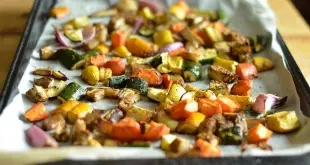So what does this all mean? The Nutrition Label.
Dumping. For those who dump, it’s a horrid experience. For those that don’t, you live in fear that someday, by pure accident, you’ll find that you do. Because it’s unavoidable, right?
WRONG!
For fellow RNYers at least, everything you need to know to protect yourself from a sugar dump is right on the very food you eat. For other surgery types, perhaps you don’t live in mortal fear of sugar, but want to avoid it because it might hinder your weight loss. So what exactly does the label have to say?
If you look at the Nutrition Facts label on your food, you will see a section on carbohydrates. That is where sugar content is listed because sugar is a carbohydrate. Now if you see a number next to the sugars – don’t freak out! That doesn’t necessarily mean it’s bad for you or that it has table sugar (sucrose, honey or molasses) in it.
But anything other than zero (and even some things with a zero) warrants further investigation. Here is our easy, three-step system for investigating the sugar in your food and making a healthy decision about it.
Step One: Look at the ingredients list. If there is table sugar in the product, it would be one of the first 3-5 ingredients listed. Now remember: table sugar operates under assumed names like “cane sugar,” “beet sugar,” “fruit syrup” and, most infamously “high fructose corn syrup.” You see any of those and you know that there is table sugar there.
If there is lactose, it’ll most often say “milk” instead of lactose. If there is fructose, sometimes it will say fructose or sometimes the product will simply list the fruit included.
Step Two: Go back to the nutrition label. What is the serving size? Now, look at the amount of sugar. Remember when we said sometimes even natural sugar isn’t always safe? A lot of that has to do with the amount of sugar relative to the portion size. For example, if a serving size of a bowl of cereal is 1 cup and the amount of sugar is 7g, that’s different than if the serving size was a half cup with the same amount of sugar.
Some people dump no matter what. For others, if there is a small amount of sugar in a large serving size, they are fine whereas if there is the same amount of sugar in a smaller serving size, they dump. Again, the science of it all is perplexing and we’re ech different!
Step Three: If something is truly sugar-free, it can still have sugar alcohols. These are substances added to foods to make them sweet, but that our bodies cannot digest. Sugar alcohols are listed under carbohydrates (usually under the sugar count, which usually is zero). They are also easily detected in ingredients lists. Look for foods that end in “itol” (malitol, xylitol, etc.). Sugar alcohols can affect the body to varying degrees.
For some, eating sugar alcohols causes mild stomach cramps, for others it causes explosive gas and diarrhea. And this is just not for our altered systems. Non-ops often experience these things too. I recall a trip to Cold Stone with the kids last spring where I got a kids cup of their sugar-free ice cream and discovered very quickly the effect of sugar alcohols on the wonder pouch!
Using all three pieces of information you are now well equipped to make a decision about your food. You may want to proceed with caution if:
- The serving size is small but there is a good amount of sugar (of any kind) per serving
- There is table sugar of any kind in the product
- The product is sugar-free but there is a high amount of sugar alcohols per serving
So, in summary, the most important things to remember about the nutrition label and sugar are:
- Sugars will be listed under the carbohydrate count, because sugar is a carbohydrate
- Sucrose can also be listed as cane sugar, beet sugar or high-fructose corn syrup. These are all different forms of sucrose and all carry the risk of Dumping Syndrome
- It’s important to read BOTH the nutrition label AND the ingredients list to determine if a food product is a good choice.
Next: Smoke and Mirrors – how the food industry tries to confuse us about sugar
Previous: Part Two – Naturally Occuring Sugars
 Bariatric Foodie Play with your food
Bariatric Foodie Play with your food



